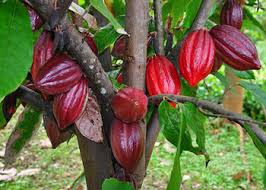
Madagascar: Conservation through Cocoa
Although it threatens biodiversity as well as sustainable development, precious wood (rosewood, ebony, etc.) exploitation is a common thing in Madagascar, especially in the uplands of the north and the northeast. Local communities of Sambava, Vohémar, Antalaha and Andapa (SAVA) decided to solve the problem by themselves.
They decided to reduce and replace the precious wood exploitation by increasing and improving cocoa plantation and exportation. Farmers plant cocoa in the rainforest, take care of their plantation and harvest on their own. Then they sale the fresh cocoa beans to local(s) cooperatives who ensure the transformation and exportation process. Some cooperatives like SAVA Volamaitso (“SAVA green money”) distribute cocoa plants and seeds to the local community and ensure also their capacity building in order to improve the plantation process and the harvest. This kind of alternative is already producing significant changes: the precious wood exploitation is about to decrease in the region and an important part of the population has found another way, pretty much “cleaner” to earn their living. The farmers try to match the international production standard required by the cocoa importers from Madagascar, such as Switzerland, Japan, France, and Belgium.
The chocolate of Madagascar is reference among the worldwide chocolate companies and classified among the best in the world.
-Mia Robert
Although it threatens biodiversity as well as sustainable development, precious wood (rosewood, ebony, etc.) exploitation is a common thing in Madagascar, especially in the uplands of the north and the northeast. Local communities of Sambava, Vohémar, Antalaha and Andapa (SAVA) decided to solve the problem by themselves. They decided to reduce and replace the precious…